Fred Hoyle An observer of the world and a ponderer on its problems ...
With Geoffrey Hoyle
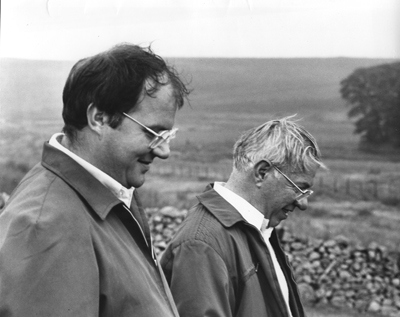
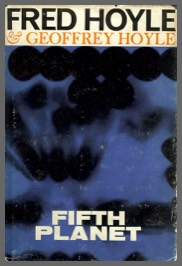
The year is 2087. The two great power blocs still face each other, with Britain having adopted the political role formerly occupied by Switzerland.
For 75 years the world has known the approach of another solar system which will pass between our sun and its outermost planets. The sun of the other solar system is named Helios by astronomers, and it too is found to have planets. Its fifth planet, Achilles, is the one most similar to Earth; and rival rocket ship expeditions are launched by the Euro-American and Communist blocs to explore this transient neighbour ... From here on the story is weird and wonderful, the action lively; the scientific ideas are intriguing and the social satire is amusing.
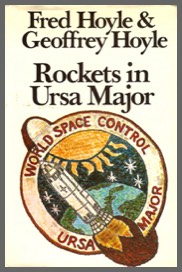
Sequel Into Deepest Space 1974
Originally written as a play and performed at the Mermaid Theatre, Easter 1962.
It is the early 20th century. Man is seeking signs of life elsewhere in the universe, but all exploratory ships have been lost without a trace - except for DSP15. Thirty years after leaving earth, and given up for lost, DSP15 suddenly appears on radar screens at the space station at Mildenhall, England. Her crew had been frozen to prevent ageing, and as the ship settles to a landing, Dr Richard Warboys eagerly awaits with other scientists for word of what DSP15 has found. But there is no crew, only a message scratched into a metal surface, signed by the captain: "If this ship returns to Earth, then mankind is in deadly peril - God help you - " And so Earth becomes accidentally involved in a cosmic battle against a virtually omnipotent alien power, in a story suspenseful and exciting from cover to cover.
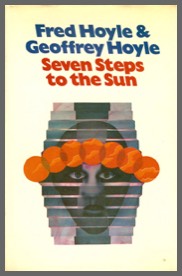
Mike Jerome, a likeable young TV writer, visits Professor Smitt, a physicist, who gives him an idea for a TV script: using some source of light, perhaps a laser beam, one could reduce the human structure to a form that could be transmitted into the future as electrical pulses - and thus create time travel.
On the way home Mike is hit by a taxi, and when he recovers he finds the date is 1979 - ten years in the future. This is but the beginning of a series of bewildering, fascinating ten year jumps. Mike is himself living the time change himself! At the end of each stop he tries to find his best friend, Pete Jones, a Negro jazz musician. Jumps to 1989, 1999 and so on, take Mike into such far-reaching places as London, the Northern Territory of Australia, California and the Italian Alps, for a rousing series of adventures in all sorts of bizarre circumstances. At the very end of this outstanding science fiction adventure by a noted father-son team, there is a slyly ambiguous twist which leaves the reader wondering...
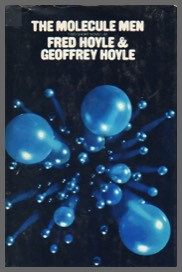
Dr John West, Cambridge don and private investigator, was present at the trial of an odd duck, R. A. Adcock, who was being most uncooperative in answering questions about a bank robbery. At length, Adcock had made a dash for it from the courtroom - through a glass window, and what should have been a three storey drop to the street. But suddenly, Adcock wasn't there, and at once a swarm of bees came into the courtroom.
Thus begins The Molecule Men, which takes many fascinating and terrifying turns to its chilling conclusion.
In the second story, the Monster of Loch Ness, Tom Cochrane, an independent scientist, determines to find out why the waters of Loch Ness are inexplicably warming up. What was it that caused the waters of the loch to pour up into the air like the worst rainstorm any of the observers had ever seen? What was at the bottom of the loch?
These two short novels by a celebrated father and son team will hold the interest of the science fiction fan from page one on.
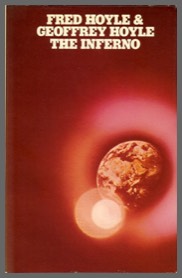
Cameron, a tall, testy, whisky-drinking, nationalist-minded, Scottish physicist, may not have been an astronomer, but he knew the off things in the sky when he saw them. From an Australian mountaintop where he was advising on the location of a radiotelescope he saw what looked like Mars, in the wrong spot in the sky. But it wasn't Mars at all, it was a supernova ... no, not a supernova but a quasar.
Knowing what would happen, Cameron dashed home to Scotland and found himself at a crossroads of his life. In the face of total catastrophe, and of intense heat, darkness and rain, he took over as natural leader with both the north and south of the United Kingdom turning to him for help.
Sir Fred Hoyle, world-renowned astrophysicist, and his son, Geoffrey Hoyle, have set their newest science fiction thriller not only in London and Scotland, but also at the University of Charlottesville, and in Australia as well.
The result is an intriguing, fast-paced novel written with a wry humour and offering some fascinating glimpses of and gibes at astronomy.
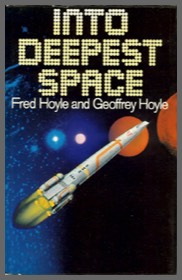
Sequel to Rockets in Ursa Major 1969
From a great distance the Yela's recorded message crackled through on the micro-earpiece: 'For the time being you have won. But I am not defeated so easily.'
That had been three years ago, after Dick Warboys had repulsed the invading Yela by firing a lithium bomb into the Sun. But now that threat seems near fulfilment as appalled scientists detect the rapid approach of a vast, engulfing cloud of hydrogen. Can humanity survive on Earth or must selected pioneers abandon it in search of a safer region of the Galaxy?
To find the answer Dick and his allies from Space suffer a perilous voyage into the realms that reach the ultimate in understanding the physical universe.
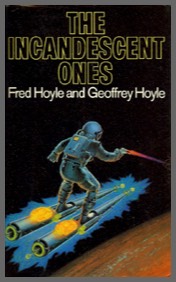
Young Peter, a student of Byzantine art forms at Moscow University, through a cryptic sentence in a lecture receives a message to buy two books of his choice at exactly 1.30 pm in the university bookstore. When he opens the package, a third book, 'The Life of Pushkin', a very special copy indeed, has been included. It is this third book that leads Peter to Armenia on a series of adventures of the sort that Fred and Geoffrey Hoyle know how to spin so skilfully and so spell bindingly. Peter's mission includes finding his father again after many years of separation. And from his father he receives the remarkable 'battery' - plus a very difficult task to perform.
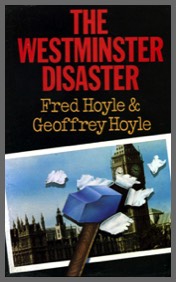
The Westminster Disaster is based on the present world shortage of high-grade uranium and the action turns on a Soviet threat to use nuclear blackmail against London.
When the British Ambassador to the U.N. seeks to veto a Soviet demand for sanctions against South Africa, the threat becomes a hideous reality.
Writing from a position of intimate knowledge of advanced trends in research and science administration, in this novel the Hoyles give vivid expression to their deep fears about the present world situation and about carefully laid plans for Soviet domination...
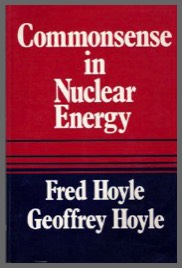
Commonsense in Nuclear Energy 1980
Although it came out in 1980, the issues it raises with regard to nuclear power are as relevant today as they were then. That the anti-nuclear lobby is expressing the same concerns and misgivings about nuclear energy as it did back in the `70's and `80's, goes to clearly show that nothing has changed and little has been done to educate the public with regard to the true nature of nuclear energy. As this book debunks myth after myth about nuclear power, one cannot help but be convinced that if it were widely read today, a more enlightened consensus among the general public would serve to ensure that Britain's plans for nuclear power would be much further advanced than they currently are.
In the preface, the authors make a clear distinction between nuclear power and nuclear war. They contend that an energy shortage caused by population increase and diminishing supplies of hydrocarbons would be a sure recipe for conflict. Therefore, the implementation of policies designed to wean the world away from the fossil fuels of coal and oil would be the best bet for ensuring that the global stockpile of nuclear weapons would not be unleashed.
The authors take great pains to point out that they are both ardent conservationists. One of the myths which they successfully explode is the one which contends that nuclear energy is harmful to the environment. They explain how hydroelectric schemes are extremely detrimental to the environment. The raising and lowering of the water levels of natural lakes has had a deleterious effect on the flora which have followed the seasonal fluctuations of the water levels of the lakes. This, together with the visual pollution of unsightly dams has, as the authors explain, added very little to meeting the country's energy requirements.
The main thesis of this book is that the nuclear industry is one of the safest of all. The authors explain that, contrary to popular misconceptions, nuclear power stations do not explode and they go on to demonstrate that gas cylinders and various chemicals have far greater explosive potential than nuclear power plants. One of the most amusing things they point out is that there are the same ingredients in a bar of chocolate as in TNT, yet no-one would dream of banning chocolate on the grounds that it is a combustible hazard! When it comes to deaths through industrial accidents, the nuclear industry comes out smelling of roses, as there are more hazards in coal and oil exploration than there are in the production of nuclear energy. The authors show that statistically we have a much greater chance of meeting our end in car and plane accidents and from natural disasters than we do from nuclear accidents. When it comes to exposure to radiation, it is found that there is vastly more radiation from our natural surroundings than from nuclear power plants. The bar graph on page 20 indicates that of all the sources of radioactivity, the lowest of all is to be found in the production of nuclear power.
The authors examine non-nuclear options as an alternative to hydrocarbons and conclude that they are not viable propositions. They explain that deep drilling for natural gas could result in earthquakes. Solar, wind and wave power are ruled out due to the massive engineering constructions that would be necessary in order to successfully concentrate and distribute the energy derived from them. The authors explain the cardinal rule which underlies the entire energy debate, which rule being that energy derived from any source must be more than the energy expended in obtaining it.
Another myth which the authors successfully demolish is the one which claims that the storage of nuclear waste presents an environmental hazard. Calculations undertaken by the American Physical Society indicate that nuclear waste buried 3,000 feet underground would take over one million years to percolate to the surface.
The authors' conclusion is that the most efficient type of nuclear technology is the fast breeder reactor. When commenting on the fears of this form of nuclear production, they devote their final chapter to a comparison between the forebodings of the anti steam engine groups about George Stephenson's locomotive and railways on the one hand and those of the anti-nuclear lobby on the other. This comparison serves to put the whole nuclear issue in a proper and rational perspective. After reading this book, one cannot help but feel that society must conquer its fears about nuclear energy and overcome its lingering Luddite mentality if the horrors of an energy crisis are to be averted.
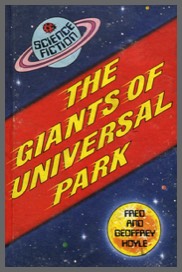
Big Business among the stars lead to crime - and the Earth's sun is stolen. While trying to get it back, Professor Gamma plays a very strange game of football...
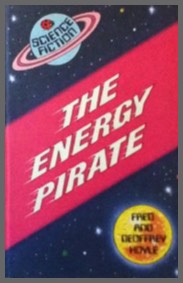
All the sugar on Earth has been stolen - to make energy for other planets light years away. Professor Gamma pursues the thief across the energy pathways of the universe to put matters right.
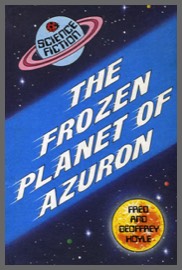
As the Earth's winter gets colder and colder, Professor Gamma realises that a powerful villain must be at work. He sets off for a distant planet to find the culprit, knowing that it will be a very dangerous task.
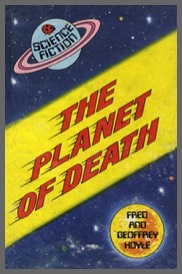
A killer bug has been set loose on Earth, with disastrous consequences. Professor Gamma and his daughter Kiryl, along with their young friend William, go to the Planet of Death to find the cure.